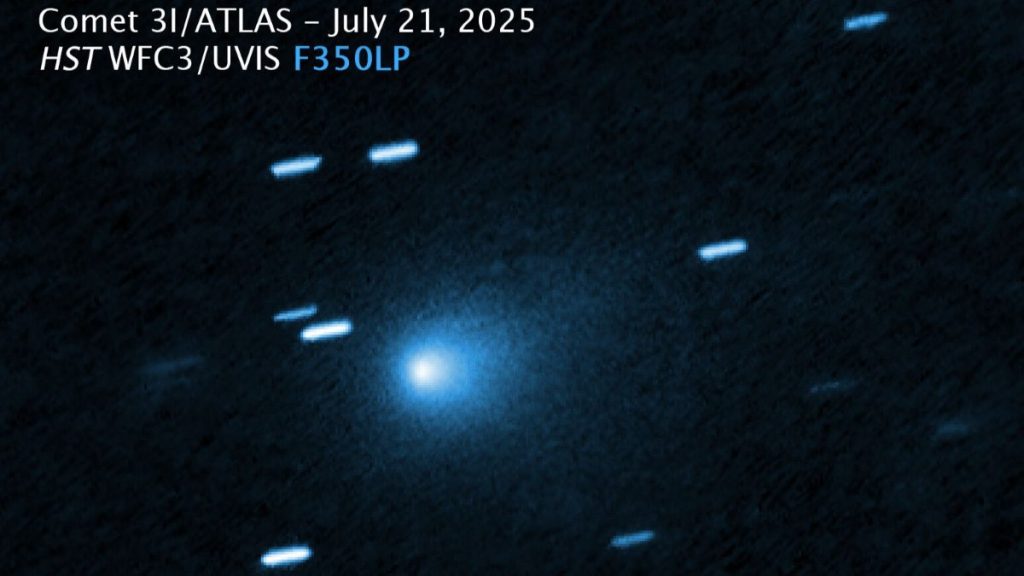As an interstellar visitor nears the Sun, scientists brace for a crucial moment that could reveal whether it’s a simple comet or something far more complex.
Others are reading now
On October 29, 2025, the object known as 3I/ATLAS will reach its closest point to the Sun, offering what may be the clearest clues yet about its origins.
Halfway through its journey
At about 203 million kilometers from the Sun, 3I/ATLAS will mark the midpoint of its passage through the Solar System.
For spacecraft, this stage, known as perihelion, is when gravitational pull offers the best chance for maneuvering.
The same principle would apply to a mothership releasing smaller probes toward nearby planets.
But despite the timing, astronomers on Earth won’t be able to see the object during this close pass.
Also read
That limitation has led Harvard astrophysicist Avi Loeb to ask whether the trajectory of 3I/ATLAS was deliberately designed, possibly by an extraterrestrial intelligence.
Speaking on Fox News’ America’s Newsroom, Loeb compared the object to the Trojan Horse from Greek legend, questioning whether a seemingly ordinary comet could conceal a technological core.
Together with researchers Omer Eldadi and Gershon Tenenbaum, Loeb co-authored a white paper urging policymakers to take seriously the risk of an unexpected “black swan” event from an unusually massive interstellar body like this one.
Halloween encounter
Coincidentally, perihelion comes just two days before Halloween. Loeb playfully asks whether 3I/ATLAS is “wearing a costume of a comet” or truly a natural icy rock.
The object will then move toward Venus, coming within 97 million kilometers on November 3, when the European Space Agency’s Juice spacecraft could have a chance to observe it on its route to Jupiter.
Also read
By December 19, 3I/ATLAS will pass within 267 million kilometers of Earth, assuming its path remains governed purely by gravity.
Loeb jokingly wonders if it might “send mini-probes toward Earth as Christmas gifts to humanity.”
In preparation, his team at the Galileo Project is analyzing atmospheric data from its three observatories to detect any unusual activity that might suggest artificial behavior in the coming months.
Approaching Jupiter
The next major milestone will come on March 16, 2026, when 3I/ATLAS draws within 54 million kilometers of Jupiter.
NASA’s Juno spacecraft could then image the object and listen for radio emissions that might serve as technological signatures.
Also read
Recent images captured by the PUNCH satellite constellation show 3I/ATLAS in sharper detail.
According to Loeb, perihelion represents the “acid test”: if the object is a natural comet, solar heating might cause it to fragment and produce a bright plume of gas and dust.
However, if it were an engineered object, something “technologically manufactured,” as Loeb puts it, its behavior could be very different.
It might maneuver unexpectedly, or generate excess heat or light inconsistent with natural composition.
Its high ratio of nickel to iron already sets it apart from ordinary comets.
Also read
Watching and wondering
Loeb discussed 3I/ATLAS and the search for extraterrestrial technologies on the Joe Rogan Experience, emphasizing his belief in “cosmic modesty”.
That is the idea that humanity should remain open-minded about intelligent life beyond Earth.
He likened the encounter to “a blind date of interstellar proportions,” saying that scientists must rely on careful observation rather than imagination or Hollywood storytelling.
As 3I/ATLAS races past the Sun, the world’s astronomers will be watching closely to see whether this visitor is just another piece of cosmic debris, or evidence that we are not alone.
Sources: Medium (Avi Loeb), Fox News, ESA, NASA.


